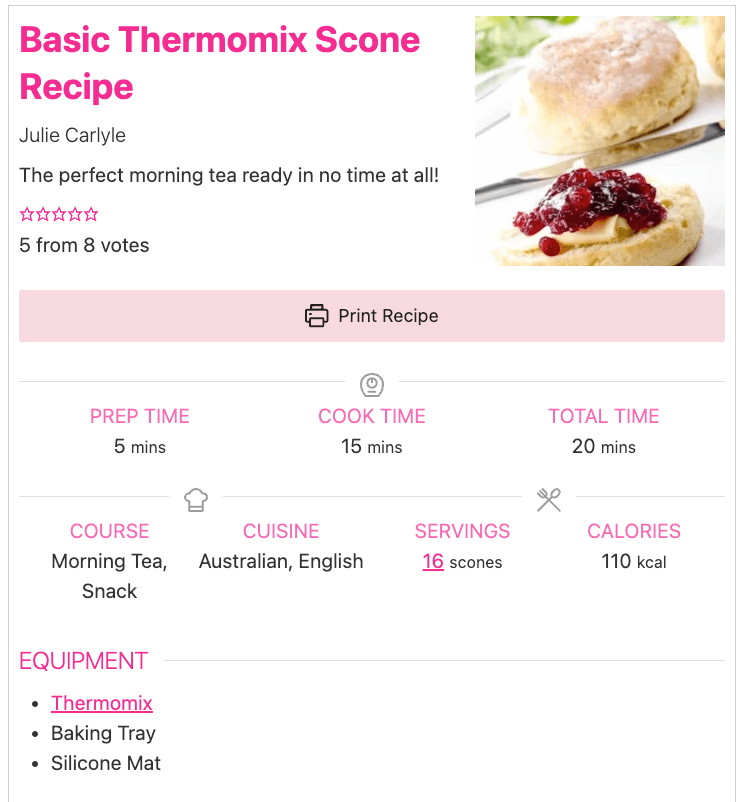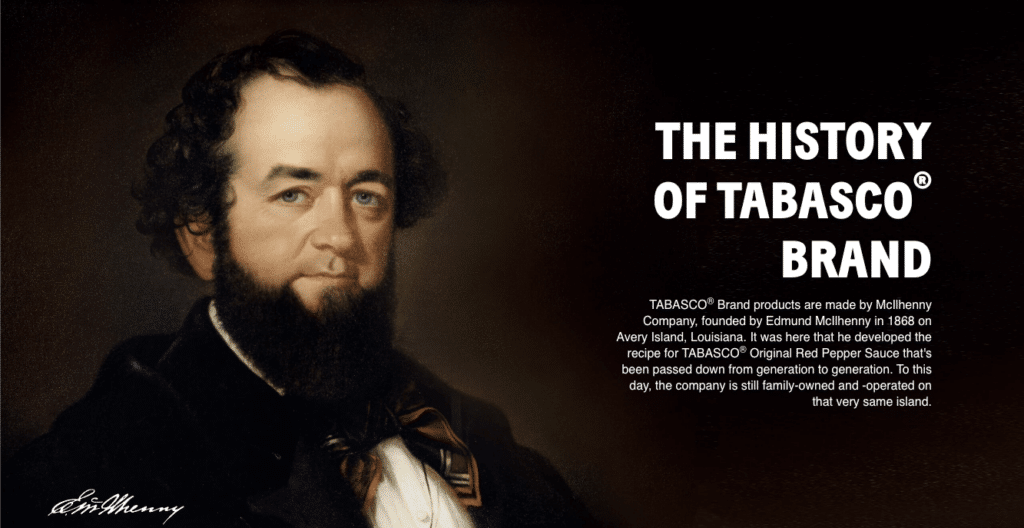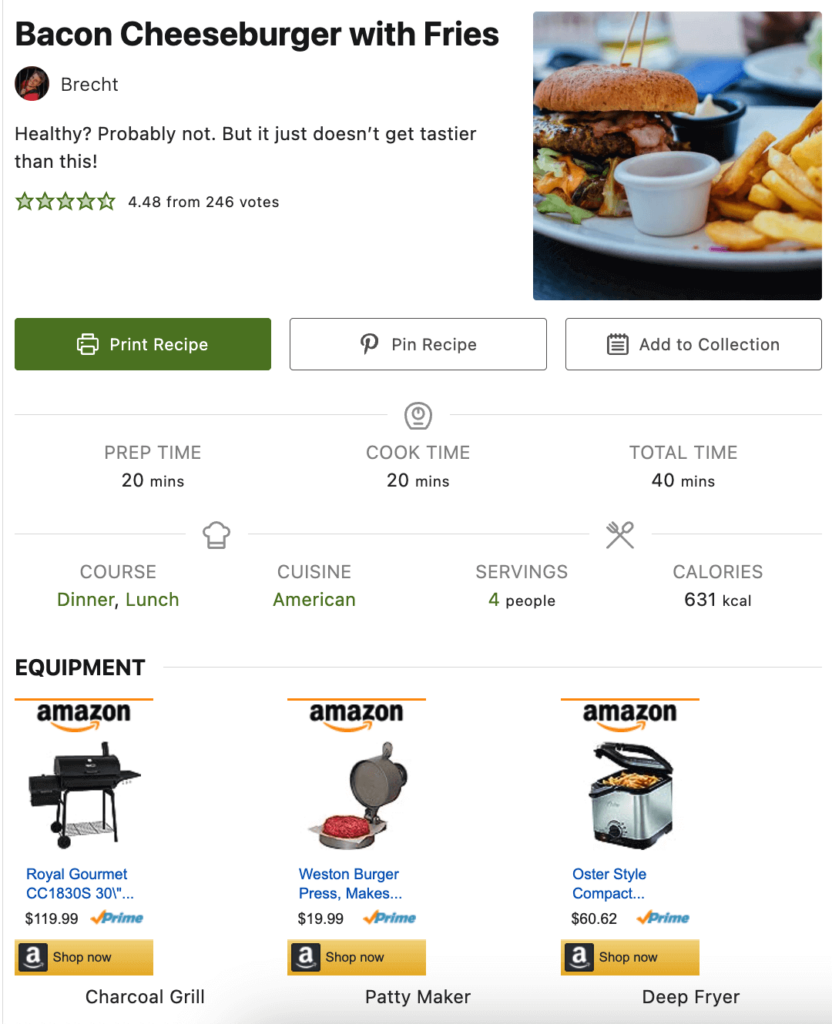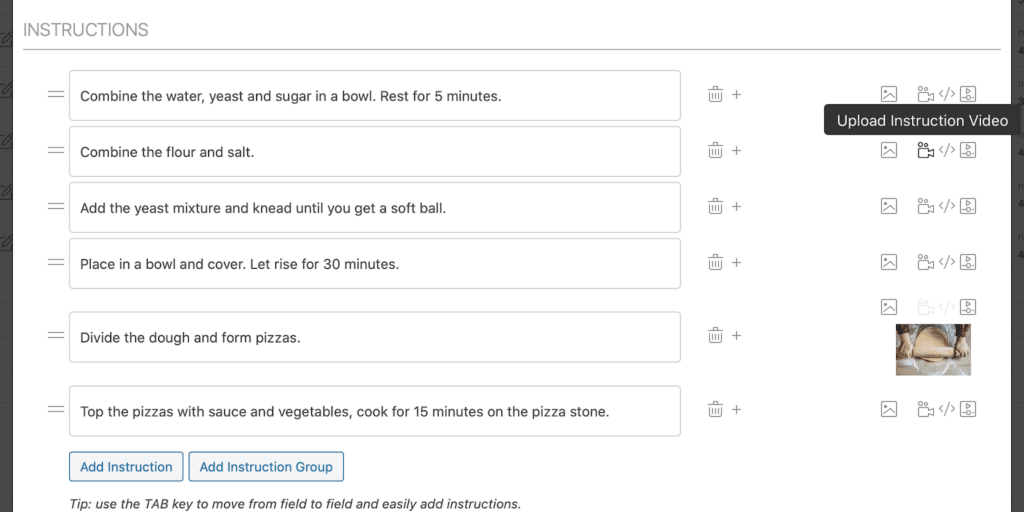Do you feel like your food business is lacking the engagement and brand awareness it deserves? Then maybe it’s time to increase your content marketing efforts.
Food content marketing, just like regular marketing, focuses on growth, content possibilities, increasing revenue, and establishing your business as an authority in the industry.
If you’ve never tried it before or previous strategies haven’t really worked out, you’re in the right place.
In this article, we’ll show you a few great examples of marketing strategies in the wild and some valuable tips for mastering food content marketing, no matter your goals.
Let’s start with the basics.
What is food content marketing?
Food content marketing is an essential part of any food business’s digital marketing strategy. It focuses on creating and distributing unique and engaging content. Its aim is to promote food-related products or services. This approach is mostly used by businesses in the food industry, from food producers and retailers to equipment manufacturers.
Food content marketing can include:
- Creating and sharing enticing recipes and encouraging readers to try them at home.
- Writing in-depth equipment and restaurant reviews that illuminate the features and benefits of food preparation tools and the best food establishments in the area.
- Offering cooking tips to simplify culinary tasks and advance the cooking process for your audience.
- Compiling food product round-ups that provide consumers with a variety of options that have been personally tested by the writer.
What are some good examples of food content marketing?
There are countless ways to propel your food business to the forefront using content marketing. Let’s consider some practical examples:
- ThermoKitchen’s perfect ThermoMix scone recipe: This is a detailed guide for creating the perfect scones using a ThermoMix, a product the website owner promotes regularly. Not only is it mentioned multiple times, but it also appears in the form of an equipment link in the recipe card, created with the WP Recipe Maker plugin. If you’re wondering how to do this, check out WP Recipe Maker’s guide on including equipment links.

- Clif Bar’s Backpacking Snacks and Meals: This article advises novice backpackers on what type of food they can prepare when they go on a trip. Throughout the blog post, the author subtly encourages readers to try their nutritious bars.

- Tabasco’s engaging brand storytelling: Through the retelling of its history, Tabasco creates a deeper connection with its audience and demonstrates how important its product is for the company.

These are just some examples of harnessing content marketing in your food business. Keep going, though, because you’ll discover even more valuable tips and techniques in the next sections.
Why you should use food content writing to grow your business
When done right, content writing in the food industry can benefit your business. Here’s how:
- Drive sales: When you strategically share valuable information, such as enticing recipes and tutorials, you can indirectly inspire consumers to make a purchase. Going back to the above examples, you can see they are all tightly related to certain products. You just need to make sure you’re not being too obvious in your promotion and that you’re emphasizing the benefits for the user.
- Grow your web traffic: With an effective search engine optimization (SEO) strategy backing your food content, you can draw waves of visitors to your website, boosting your online presence and market reach. WP Recipe Maker can be very helpful in this area with its ability to add JSON-LD metadata to recipes in order to show your recipes as rich snippets and rich cards in Google’s search results.
- Create brand awareness: Sharing your brand’s unique insights and expertise through high-quality content creates vital connections with your target audience, enhancing their understanding and appreciation of your brand.
- Establish your company as an authority in the food industry: Effective food content writing builds trust and loyalty with your audience, placing your business as a trusted source of culinary wisdom and the go-to resource for food-related information.
Using food content writing to grow your business: 4 popular approaches
So, you’re aware of the advantages content marketing brings, but how can you leverage that for your company? Looking at the four main strategies people use, we can easily distinguish two categories – those who outsource and those who decide to do the work themselves.
We’ll lay out the most common options but keep in mind that for most people, option number four – writing and publishing your own content – is usually the most viable one.
1. Hire a marketing agency to help you create content
Teaming up with a content marketing agency is the less risky option, especially if you do your research. Look for companies with experience in getting results from different content forms like food articles, video content, and social media campaigns.
While this approach does come with a hefty price tag (ranging from $2500 to $10,000+ monthly), the potential for a high return on investment (ROI) and comparatively lower risks make it a viable option if you select your agency carefully.
2. Use an in-house team to create content
As your food business grows, the option to bring a content manager or an entire content team on board could be very tempting. It gives you complete control over the content development process and a permanent team that you can train specifically to your requirements.
In terms of cost, a content manager’s average salary is about $77,000 per year, and a content writer usually costs around $62,000 per year. While this might sound a bit expensive, especially if you need multiple employees, keep in mind that having your own team that knows your brand to its core often offers a higher ROI compared to the agency alternative.
3. Create content using freelancers
Consider the role of a freelance food writer as a professional sous chef for your brand. This approach is best for small and medium-sized businesses due to the absence of rolling commitments. Platforms like Upwork have an abundance of writers from all kinds of niches, with hourly rates ranging from $25 to $50, depending on how much you’re willing to spend.
Most freelance writers expect employers to take care of tasks such as conducting keyword research, generating ideas, content strategy, editing, publishing, and promoting blogs, while they only take care of the writing itself according to a brief that you’ve provided. That makes it cheaper but also a lot more complicated on your side.
The other option is to try and find an SEO content writer or a copywriter willing to work with you to create a content plan and do all of these tasks by themselves, but at this point, you might as well hire someone full-time.
4. Create and publish content yourself
When just starting out, smaller food businesses often embrace the DIY route – writing and publishing content in-house. Although this path leads to less monetary investment, it’s not always the most cost-effective. Creating engaging content warrants certain skills and experience that your team might be in the process of acquiring.
Nonetheless, good results are not far off if you’re willing to invest time in improving your writing skills, master the art of recipe writing, and completely immerse yourself in the world of food.
To help you along the way, the following section provides tips and insights for creating engaging in-house content.
Content marketing in the food industry: Tips for success
If you’re at the beginning of your food blogging journey or planning to advance your content marketing strategy, understanding the following key strategies can really help you. Here are some important tips:
1. Do your research
While writing might seem easy to some, tailoring the right content for your precise audience demands a considerable amount of time and thorough research. Before you even start putting down a single word, you need to identify the pain points your content is set to address.
For a food business, these challenges could range from customer queries like “What should I cook for dinner?”, “Where can I find reliable non-stick cookware?” to business-specific concerns like “How do I ensure my meals follow dietary restrictions?”
The first step in the content creation process should be to gather a list of prospective customer pain points. A few popular methods include:
- Market research: Conducting audience surveys can help you better understand user needs and desires.
- Keyword research: Platforms such as Semrush and Answer the Public can show you what people are searching for, allowing you to tailor your content accordingly.
- Competitor analysis: Analyzing how your competitors tackle customer problems can grant valuable insights and provide a window to address gaps in a unique manner.
Once you’ve compiled this list, you’ll have a foundation for the themes your content should focus on. Aligning these themes with your product or service promotion presents your solutions in a context that resonates with your audience, thereby catering precisely to your customers’ needs.
2. Always prioritize content quality
One golden rule to follow is quality over quantity. Every captivating recipe, kitchen hack, or review you publish should directly address a culinary pain point or gastronomic curiosity a prospective customer might have.
What’s more important is that you should make this clear from the very start with a catchy title and blog introduction like the one Holy Cow Vegan has.

Or, imagine a dinner plan, “12 Midweek Dinners That You Probably Already Have the Ingredients for,” or a listicle of “10 Non-stick Frying Pans That Are Built to Last”. All of these examples cater to the specific needs of your audience, whether it’s to satisfy their curiosity or help them solve an issue.
Here’s what a high-quality piece of marketing content should include:
- Product-led: The content should be designed around your products or services. Your product should be the solution to the problem or need you’re addressing in your content.
- Customer-focused: Speak directly to your customer’s needs. Make sure your content is relatable and practical for your audience.
- Clear and concise: Time is a luxury in today’s fast-paced world. Make every word count, and steer clear of fluff and confusing jargon.
- User-friendly: Make the reading experience enjoyable. Use bullet points, lists, headings, and content blocks to make the content easy to digest and navigate. If you’re including recipes, which you definitely should, the WP Recipe Maker plugin for WordPress can help you create captivating recipe cards filled with useful information.
- SEO optimized: Play by the SEO rulebook and pay attention to on-site and mobile optimization, technical SEO, and metadata.
- Well-researched: Knowledge is the key to earning trust. Your content should be well-researched, informative, and backed by reliable data where relevant.
- Visually appealing: Create content that is prominent and rich in visuals. Invest in quality photography, especially for the food industry, to make your content more appealing.
- ‘Instagram-worthy’: Craft aesthetic content that your readers will be proud to share on their feeds, expanding your brand’s visibility and follower base.
Always remember, in content marketing, your aim is not just to satiate readers with content but to nourish them with value. For more tips on creating top-notch content for your food blog, try our article on food writing tips.
3. Include recipes
Did you know that almost half of all high-traffic blogs are focused on food? 42.8% of them, to be precise! The most consumed content in those blogs, pun intended, consists of recipes.
Now, you might be wondering, “What makes recipe posts so effective?” Well, the charm lies in their inherently SEO-friendly nature. The structure of a recipe, with its unique headings and sub-headings, variety of keywords, and structured data, naturally lends itself to better SEO. The result? An expanded outreach for your blog.
To aid in managing these recipe posts, consider using a plugin like WP Recipe Maker for WordPress. It eases the selling of ingredients or equipment via your recipes and enriches your website’s user experience.

Suppose that’s not enough, WP Recipe Maker simplifies the process of creating and managing recipes on your blog. Plus, it automates crucial SEO tasks, including metadata generation, leading more people to your site.

4. Ensure everything is search engine optimized
Food writing is as competitive as it gets. If your content does not comply with SEO best practices, it might not reach its potential readership.
If you find SEO daunting, you might want to hire a skilled consultant or a freelancer to optimize your blogs. They can guide you through the fundamentals of SEO and ensure that you adhere to its best practices. Along with this, tools like the Yoast SEO plugin for WordPress and Clearscope can be real game-changers when you’re a beginner in SEO.
5. Embrace multimedia content
Content diversity plays a crucial role in engaging audiences. Step up your content strategy by including multimedia elements such as videos and infographics. Imagine integrating video cooking tutorials for recipes like ‘How to Craft the Perfect Ratatouille’ or an article with tips titled ‘Best Techniques for Kneading Dough’ into your recipe posts.
💡Hint – you can actually embed videos into recipe cards with the WP Recipe Maker.

Apart from lending your blog a dynamic element, videos and infographics are visually captivating. They are highly shareable types of content, up for grabs to be repurposed on multiple social media platforms like Pinterest and Instagram.
6. Collaborate with food influencers and bloggers
Say yes to collaborations! Team up with influencers or food bloggers in your niche to give your food business a promotional boost.
Brands like online supermarket Ocado frequently partner with influencers to create content tailored to their audience. Interestingly, Ocado’s collaboration with Nigella Lawson spans a series of engrossing recipe posts and a landing page spotlighting Nigella’s favorite products.
Besides introducing your brand to an entirely fresh audience, this kind of content marketing builds credibility for your brand. Make a point to choose influencers or bloggers whose values mirror yours. Even if you’re on a shoestring budget, striking a partnership with micro-influencers can be an economical strategy to create intrigue and achieve connectivity with niche audiences.
Alternatively, you can join the other side and become a food influencer yourself, partnering with brands and doing all kinds of interesting collaborations.
7. Capitalize on food trends
Harness the power of food trends in your content marketing to captivate new audiences. A good example of this is how Misfits Markets rode the wave of air fryer popularity.
To create dynamic, engaging content and stay ahead of the curve, it’s crucial to remain informed about what’s hot and what’s not. Keep a lookout on popular food blogs, culinary magazines, and trending social media posts to know what’s cooking in the food world.
8. Optimize your website’s performance
Don’t let poor website performance undermine your exceptional content. An unpleasant user experience can deter your audience, no matter how great your content is. In today’s mobile-first world, making sure your food content is mobile-responsive is of supreme importance.
Optimizing image sizes and exploiting browser caching can significantly speed up your site’s loading time. Keep your website’s performance in check with regular monitoring using tools like Google Search Console.
9. Analyze and adapt with data
Regularly analyze your food content’s performance using web analytics tools, such as Ahrefs and Google Analytics. Monitoring crucial metrics, like website traffic, bounce rates, conversion rates, and social media interaction, will provide valuable insights.
Use these findings to adapt your content strategy and recognize what type of content resonates most with your readers, which keywords draw in the most traffic, and the peak activity times for your audience.
Adopting a data-driven decision-making approach will allow you to fine-tune your content marketing strategy, leading to progressive improvement and elevated results over time.
Create compelling food content with WP Recipe Maker
Succeeding in food content marketing involves not just great recipes but a deep understanding of your audience. Adapting to food trends and focusing on quality is crucial, and that’s where WP Recipe Maker comes in.
WP Recipe Maker supports every aspect of food content marketing, from brainstorming and researching topics to presenting engaging recipes. This powerful tool helps you create content that truly resonates with your audience, inspiring them to cook, trust your brand, and ultimately, purchase your products.
With its SEO-ready features and process management tools, WP Recipe Maker encourages more people to discover and try your recipes, steadily increasing your web traffic and sales. It is a must for anyone aiming to improve their food content marketing game.
So what are you waiting for? Grow your business with WP Recipe Maker today! Explore WP Recipe Maker’s pricing and start crafting exceptional food content!






